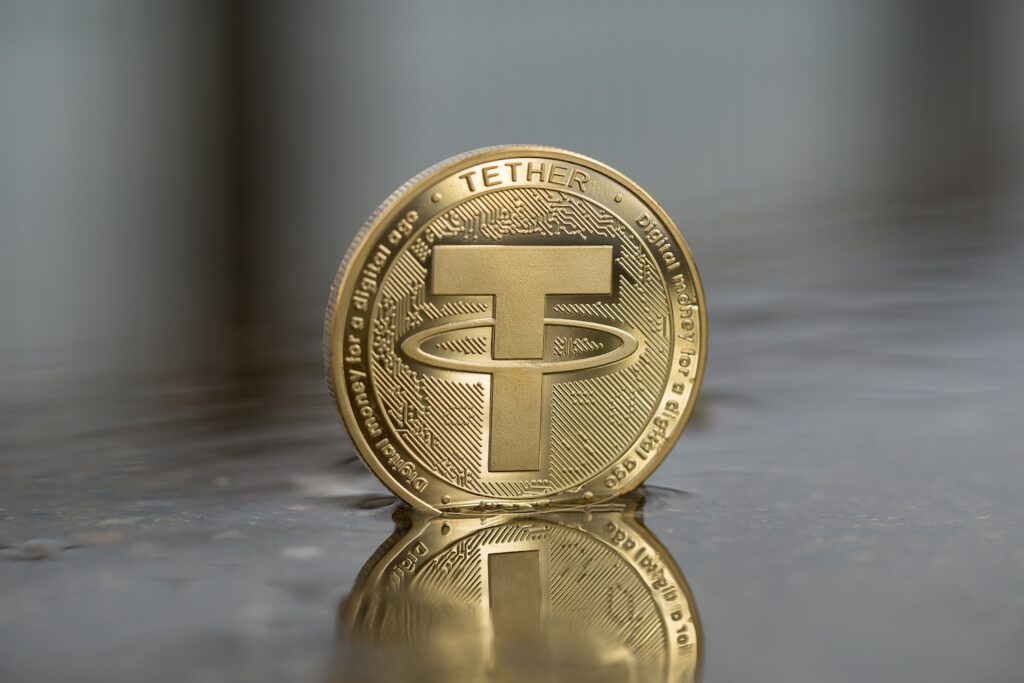Gay Elon Musk (GAYELON) could turn early investors into multi-millionaires if it becomes a mainstream coin, like Shiba Inu (SHIB) and Dogecoin (DOGE).
Gay Elon Musk (GAYELON), a new Solana memecoin that was launched this week, is poised to explode over 14,000% in price in the coming days.
This is because GAYELON has announced its first centralized exchange listing, which will be on KuCoin.
This will give the Solana memecoin exposure to millions of additional investors, who will pour funds into the coin and drive its price up.
Currently, Gay Elon Musk can only be purchased via Solana decentralized exchanges, like Jupiter and Raydium, and early investors stand to make huge returns in the coming days.
Early investors in SHIB and DOGE made astronomical returns, and Gay Elon Musk could become the next viral memecoin.
Gay Elon Musk launched with over $6,000 of locked liquidity, giving it a unique advantage over the majority of other new memecoins, and early investors could make huge gains.
To buy Gay Elon Musk on Raydium or Jupiter ahead of the KuCoin listing, users need to connect their Solflare, MetaMask or Phantom wallet, and swap Solana for Gay Elon Musk by entering its contract address – AErKQkbiSgsRMT1GmS7XW5tWkpSmdT1zdVJCMv1unvBH – in the receiving field.
In fact, early investors could make returns similar to those who invested in Shiba Inu (SHIB) and Dogecoin (DOGE) before these memecoins went viral and exploded in price.
If this happens, a new wave of memecoin millionaires could be created in a matter of weeks – or potentially even sooner.
The Solana memecoin craze continues amid larger memecoins, like Shiba Inu (SHIB), Dogecoin (DOGE) and DogWifHat (WIF) trading sideways in recent weeks and losing momentum.
This is why many SHIB, DOGE and WIF investors are instead investing in new Solana memecoins, like GAYELON.
Former United States House of Representatives Speaker Nancy Pelosi is reportedly considering supporting the Republican-led crypto bill, the Financial Innovation and Technology for the 21st Century Act (FIT21).
According to U.S. political magazine The American Prospect, Pelosi, now Speaker Emerita and no longer in the Democratic Party leadership, may endorse the bill that could be voted on in the House on May 22.
FIT21 aims to clarify the division of authority over crypto assets between the Commodity Futures Trading Commission (CFTC) and the Securities and Exchange Commission (SEC).
If enacted, the bill would revise the 90-year-old Howey test, which determines what assets are considered securities, and would largely remove crypto from SEC oversight.
The crypto industry has welcomed FIT21, as many believe it clarifies the currently ambiguous regulatory framework for digital assets.
Mark Hays, a senior policy analyst on fintech with Americans for Financial Reform, stated to The American Prospect that “the bill delivers what the industry has sought for some time: a regulatory regime mostly dominated by the CFTC, which has been far more accommodating of the industry.”
If Pelosi backs the bill, she would be opposing key Democrats like Maxine Waters and David Scott, who both stand against it.
However, leaked emails indicate they will not rally House Democrats to vote against it.
READ MORE: Pyth Price Feeds Launches on Orange – A UGC-Focused L1 Blockchain
Pelosi’s potential support for the pro-crypto bill is part of a broader trend among some Democrats warming to crypto, with analysts suggesting this may be an effort to gain support from pro-crypto voters.
For instance, a possible SEC U-turn on spot Ether fund approvals is seen as part of this effort.
Nevertheless, financial reform groups and anti-crypto Democrats argue that the bill would dismantle decades of financial regulations to favor the crypto industry.
“This is not about supporting crypto; this is about trying to navigate the threat of promises from super PACs,” said Hays.
The crypto industry has leveraged super PACs—political action committees that can raise unlimited funds—to back pro-crypto candidates in the upcoming U.S. elections.
Opposing Democrats, such as Senator Elizabeth Warren, view these super PACs as a significant threat as crypto gains influence in this year’s elections.
On May 21, North Carolina Representative Wiley Nickel urged lawmakers to support FIT21 to prevent the SEC from “turning cryptocurrency regulation into a political football.”
To submit a crypto press release (PR), send an email to sales@cryptointelligence.co.uk.
On Tuesday, May 21, BlackRock‘s spot Bitcoin exchange-traded fund (ETF) dominated the market, accounting for 95% of the total inflows into United States spot Bitcoin ETFs. Together, these ETFs saw over $300 million in net inflows.
Preliminary data from Farside Investors revealed that BlackRock’s iShares Bitcoin Trust (IBIT) experienced substantial inflows of $290 million on May 21. The combined net inflow for all eleven ETF issuers was $305.7 million.
This marks the highest inflow for BlackRock’s ETF since April 5, breaking a six-week streak of negligible inflows.
The recent figure surpasses the total inflows for the previous 21 trading days combined.
In total, spot Bitcoin ETFs have attracted more than $1 billion over the last four trading days amid a volatile Bitcoin rally.
With these latest numbers, BlackRock’s fund has reached $16 billion in total inflows since its inception, according to Farside Investors.
Nonetheless, the official product website lists the assets under management (AUM) at $19 billion.
This brings BlackRock’s IBIT close to the industry leader, Grayscale, which reports $20 billion in AUM for its Grayscale Bitcoin Trust (GBTC) ETF.
On May 21, GBTC recorded zero outflows, marking five consecutive days without a net outflow.
Over the past five days, it has seen inflows totaling $72.5 million, ending a four-month streak of steady outflows.
READ MORE: Global Bitcoin ATM Numbers Decline for the First Time Since July 2023
However, not all ETFs fared well on Tuesday.
The VanEck Bitcoin Trust ETF experienced outflows of $5.9 million, while the Bitwise Bitcoin ETF saw $4.2 million in outflows.
Conversely, the Fidelity Wise Origin Bitcoin Fund had minor inflows of $25.8 million, while the others remained unchanged.
The surge in Bitcoin ETF inflows has been fueled by a recent rise in BTC prices, which climbed 12% over the past week.
On May 21, BTC hit a six-week high of $71,600 but dropped below $70,000 in early Asian trading on May 22. At the time of writing, it was priced at $69,444.
Additionally, speculation that the U.S. Securities and Exchange Commission might approve spot Ether ETFs has lifted crypto markets since May 20.
To submit a crypto press release (PR), send an email to sales@cryptointelligence.co.uk.
Early investors in memecoins like Shiba Inu (SHIB), Bonk (BONK) and Dogecoin (DOGE) made astronomical returns, and Biden in a Dogs World (BIDDOG) presents a similar opportunity for a limited time.
Biden in a Dogs World (BIDDOG), a newly launched Solana memecoin, is poised to explode over 14,000% in a matter of days, as former Shiba Inu (SHIB), Bonk (BONK) and Dogecoin (DOGE) investors pour funds into this new token.
BIDDOG will be listed on KuCoin, one of the largest centralized exchanges in the world, within a few days – and this is a massively bullish development for the token, as millions of new investors will easily be able to buy Biden in a Dogs World.
Currently, Biden in a Dogs World can only be purchased via Solana decentralized exchanges, like Jupiter and Raydium, and early investors stand to make huge returns in the coming days.
To buy BIDDOG on these platforms, users need to connect their Solflare, MetaMask or Phantom wallet, and swap Solana for Biden in a Dogs World by entering its contract address – bUv1o6DFK5Wa7V1SY2HoFTUmaZSQ58eKqk5rKxvWuZr – in the receiving field.
BIDDOG currently has a market cap of just under $13,000, with over $4,000 in locked liquidity, meaning it has huge upside potential.
Early investors could make returns similar to those who invested in Shiba Inu (SHIB), Dogecoin (DOGE) and Bonk (BONK) before these memecoins went viral and exploded in price.
If this happens, a new wave of memecoin millionaires could be created in a matter of weeks – or potentially even sooner.
Swimming Cat (SWIMCAT) could become a viral memecoin, like Shiba Inu (SHIB) and Dogecoin (DOGE).
Swimming Cat (SWIMCAT), a Solana memecoin that was launched today, is aiming to challenge other memecoin giants, such as Shiba Inu (SHIB) and Dogecoin (DOGE).
Early investors in SHIB and DOGE made astronomical returns, and Swimming Cat presents a similar opportunity.
Swimming Cat has a market cap below $15,000 at the moment, meaning that when it just reaches a modest market cap of $400,000-$800,000, early investors would generate returns of 2,000%-5,000% in a matter of days or hours.
The exciting memecoin is poised to rally 11,000% in the coming two days before it will be listed on Bitrue – a massive cryptocurrency exchange – and Swimming Cat could potentially reach a multi-million dollar market cap within a few weeks.
Currently, Swimming Cat can only be purchased via Solana decentralized exchanges, like Jupiter and Raydium, and early investors stand to make huge returns in the coming days.
To buy Swimming Cat on these platforms, users need to connect their Solflare, MetaMask or Phantom wallet, and swap Solana for Swimming Cat by entering its contract address – 2NsBvNNCzDDfhuzq6D55mCyzg6zt43rfdjnzTAg14Kr4 – in the receiving field.
In fact, early investors could make returns similar to those who invested in Shiba Inu (SHIB) and Dogecoin (DOGE) before these memecoins went viral and exploded in price.
If this happens, a new wave of memecoin millionaires could be created in a matter of weeks – or potentially even sooner.
The Solana memecoin craze continues amid larger memecoins, like Shiba Inu (SHIB), Dogecoin (DOGE) and DogWifHat (WIF) trading sideways in recent weeks and losing momentum.
This is why many SHIB, DOGE and WIF investors are instead investing in new Solana memecoins, like SWIMCAT.
The Venezuelan government has joined the ranks of countries that have opposed crypto mining due to its significant electricity consumption.
A local news outlet reports that Venezuela’s Ministry of Electric Power plans to disconnect cryptocurrency mining farms from the national grid.
This initiative aims to regulate excessive energy use and ensure a stable power supply for the population.
An X post from Venezuela’s National Association of Cryptocurrencies confirmed that crypto mining is now prohibited in Venezuela.
This development follows a recent crackdown in which authorities confiscated 2,000 cryptocurrency mining devices in Maracay as part of an anti-corruption effort.
The ministry highlighted the necessity of providing efficient and reliable electrical service across Venezuela by reducing the strain from high-energy-consuming mining farms.
Officials argue that these measures are crucial to stabilizing the national power supply, which has been inconsistent for the past decade.
Venezuela has faced recurring blackouts, especially since 2019, severely affecting residents’ daily lives and the broader economy.
Cryptocurrency mining’s heavy electricity demands have prompted other countries, such as China and Kazakhstan, to enforce strict regulations or bans on the practice.
READ MORE: Notorious Crypto Drainer Pink Drainer Retires After Stealing Over $85 Million
The Venezuelan government’s action against cryptocurrency mining is part of a broader anti-corruption campaign, which has resulted in the arrest of several top officials.
Joselit Ramírez, the former head of the National Superintendency of Cryptoassets, is a central figure in these corruption allegations.
Rafael Lacava, the governor of Carabobo state, has emphasized the importance of public cooperation in identifying illegal mining operations, urging citizens to report any illicit activities.
This is not Venezuela’s first measure against crypto mining.
In March 2023, the country’s energy supplier shut down crypto mining facilities nationwide as part of corruption investigations involving the state oil company.
At that time, Venezuela’s attorney general, Tarek William Saab, revealed that government officials were allegedly conducting parallel oil operations with the help of the national crypto department.
In 2023, eight major cryptocurrency mining operators in Kazakhstan sent an open letter to President Kassym-Jomart Tokayev, complaining about high energy prices for crypto miners.
To submit a crypto press release (PR), send an email to sales@cryptointelligence.co.uk.
Bitcoin layer-2 developer Alex Labs has successfully frozen over $3.9 million worth of cryptocurrency exploited from its BNB Smart Chain bridge, according to a May 16 social media post.
The team stated that the attacker sent the funds to various centralized exchanges (CEXs), enabling the funds to be frozen with the cooperation of these exchanges.
The team announced that it recovered the entire balances for 17 different tokens, including “all aBTC, sUSDT, xBTC, xUSD, ALEX, atALEX, LiSTX, LUNR, SKO, CHAX, $B20, ORDG, ORMM, ORNJ, TRIO, TX20 and STXS.”
Additionally, $13.7 million worth of Stacks (STX) tokens were exploited. Of these, the attacker mistakenly sent “about 3 million” to centralized exchanges.
A linked spreadsheet shows STX balances at each exchange used by the hacker, revealing that $3.7 million is held at exchanges, while $9.6 million remains in wallets under the attacker’s control.
The attacker accessed the funds by taking control of a private key linked to one of the bridge’s “vaults.”
However, “The smart contract code and infrastructure underlying ALEX were not compromised,” the team asserted.
Alex Labs has offered a 10% bounty to the attacker and a promise not to prosecute if they return 90% of the stolen funds.
READ MORE: Param Labs Raises $7 Million to Revolutionize Web3 Gaming Infrastructure
They are also preparing a police report to be filed if negotiations fail.
Given the possibility that not all funds will be recovered, the team is “evaluating deployment of $ALEX reserves held by ALEX Lab Foundation.”
These reserves may support a “treasury grant program” to compensate users who lost funds in the attack.
Due to the significant amount of STX tokens exploited, the team may propose a Stacks network upgrade to freeze the remaining funds and mint new tokens for the victims.
Network upgrades to freeze an attacker’s coins are rare but not unprecedented. Similar actions were taken during the 2016 Ethereum DAO hack and the PopcornSwap rug pull on the BNB Smart Chain.
However, such upgrades are rarely approved, and in the PopcornSwap case, the upgrade froze funds but did not reimburse investors.
Alex Labs stated it continues to monitor the attacker’s addresses with “multiple alarms” to prevent further cash outs.
Recently, Alex Labs is not the only Bitcoin layer-2 bridge attacked. On May 17, the XLink bridge was also compromised, losing $10 million.
A white-hat hacker managed to recover $4.3 million of the stolen funds.
The XLink attack mirrored the one against Alex, with the attacker using a phishing technique to obtain the team’s private key for unauthorized withdrawals.
To submit a crypto press release (PR), send an email to sales@cryptointelligence.co.uk.
Cryptocurrency exchange Kraken has stated it has “no plans” to delist Tether (USDT) in Europe, contrary to a recent report suggesting the firm was “actively reviewing” the decision to remain legally compliant.
“[Kraken] continues to list USDT in Europe and we have no plans to delist at this time,” said Mark Greenberg, Kraken’s global head of asset growth and management, in a May 18 X post.
Greenberg emphasized that the firm will adhere to all legal requirements, even those it disagrees with. “But the rules are not finalized yet and we continue to do everything we can to continue to offer all relevant stablecoins to our European customers.”
A May 17 Bloomberg article had reported that Kraken was “actively reviewing” plans to comply with the European Union’s upcoming Markets in Crypto-Assets Regulation (MiCA) framework.
“We’re absolutely planning for all eventualities, including situations where it’s just not tenable to list specific tokens such as USDT,” said Marcus Hughes, Kraken’s global head of regulatory strategy, at the time.
READ MORE: Bitcoin Eyes New Highs as Analysts Spot Imminent Golden Cross on Lower Timeframes
“It’s something that we’re actively reviewing, and as the position becomes clearer, we can take firm decisions on that.”
The rules governing stablecoins under MiCA are set to take effect on June 30, while the broader rules for cryptocurrency service providers will come into force six months later on December 30.
One of Kraken’s major competitors, OKX, delisted USDT in Europe in March.
Binance also announced similar plans last September, citing the need to comply with MiCA, but has yet to follow through.
In April, Kraken ceased support for the Monero privacy token for its customers in Belgium and Ireland.
Despite these regulatory challenges, Kraken has been expanding its services in Europe.
The exchange recently secured a virtual asset service provider registration in Spain and the Netherlands, along with an electronic money institution license in Ireland.
To submit a crypto press release (PR), send an email to sales@cryptointelligence.co.uk.
The integration of Pyth Price Feeds into the Orange blockchain was officially launched today, marking a significant enhancement in the tools available for User Generated Content (UGC) on platforms focused on gaming, AI, and metaverses. Orange, a Layer 1 blockchain, is now equipped to support Web3 developers in both creating and monetizing virtual worlds.
With the introduction of over 500 real-time data feeds for both digital and traditional assets, developers utilizing Orange will benefit from the Pyth Network’s pull oracle, which provides the most up-to-date price updates with minimal latency. The integration is designed to be permissionless, facilitating easy adoption and high composability.
Wayne, the Chief Marketing Officer of Orange, expressed enthusiasm about the collaboration: “By teaming up with Pyth, Orange is harnessing the power of real-time financial data to supercharge the GameFi ecosystem on our platform. This collaboration not only boosts transparency but also opens the door to exciting new possibilities for both creators and users.”
Orange aims to be a holistic ecosystem that enhances community engagement, supports creators, and simplifies blockchain integration in gaming and metaverse environments. The platform offers various tools and infrastructure that enable the creation of engaging virtual worlds, including GameFi economy creation, leaderboards, AI avatar creation, voice-activated asset builders, and streamlined NFT deployment.
The availability of Pyth Price Feeds within the Orange ecosystem is set to revolutionize the creation of UGC games and virtual environments by providing developers access to accurate and immediate price data. This feature enhances transaction reliability in-game, ensuring fairness and building trust among users.
Wayne further highlighted the broader implications of the integration: “The potential of pull oracles in enhancing creator platforms are largely untapped, and we’re all geared up to explore this frontier. Together with Pyth, we’re setting the stage to empower and elevate the next wave of Web3 creators.”
Bitcoin hovered around $67,000 on May 19, with spot price liquidity strengthening as the week came to a close.
Data from Cointelegraph Markets Pro and TradingView indicated that bulls maintained the week’s upward trend, pushing month-to-date gains above 10%.
Popular trader Daan Crypto Trades identified $72,000 as the significant resistance zone.
“Price did take out a big cluster around 67.4K but there’s still some big levels at ~$68K. ~$72K onwards is where most liquidity lies atm,” he shared on X, along with a CoinGlass chart.
He noted, “Below, most has been cleared with the recent downtrend, first noteworthy level would be the ~$60K region.”
Closer to the spot price, liquidity was concentrated around $66,500 and $67,800.
Daan Crypto Trades also emphasized the importance of Bitcoin’s 100-day moving average (MA) as a long-term support level.
“This will be a good indicator going forward to gauge mid/high timeframe momentum,” he commented.
“Trader and analyst Rekt Capital offered an optimistic perspective, suggesting that only a 1% BTC price increase was needed to usher in a new bull market phase. “
READ MORE: Australian Man Pleads Guilty to Promoting BitConnect
BTC only needs to drop an additional -1% to perform the post Bull Flag breakout retest attempt in an effort to secure trend continuation to the upside,” he explained while analyzing daily timeframes.
In contrast, trader and commentator Credible Crypto offered a more cautious view on recent BTC price action.
An X post on May 17 suggested that the upside was nearly exhausted and that BTC/USD might retest $60,000 or lower.
“At this point, I think we will, at minimum, tag the 59-60k region,” he warned, sharing a chart.
“The blue zone at 62-63k is still an area of interest that may offer some temporary relief, but ultimately I think it will give way.”
Credible Crypto further noted that altcoins would likely experience sharper declines if Bitcoin dropped to the $59-60k range.
“A move down to 59-60k on $BTC is a 10% drop- on many alts their respective drops will be much more,” he concluded.
To submit a crypto press release (PR), send an email to sales@cryptointelligence.co.uk.












